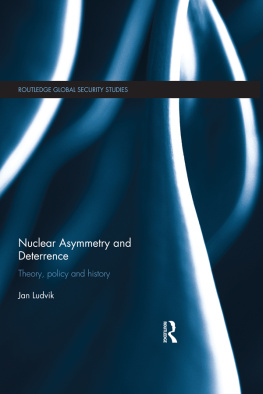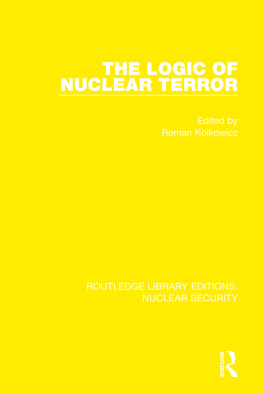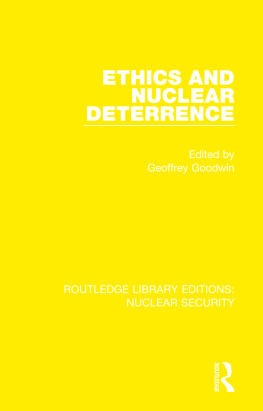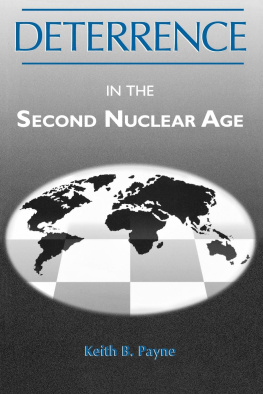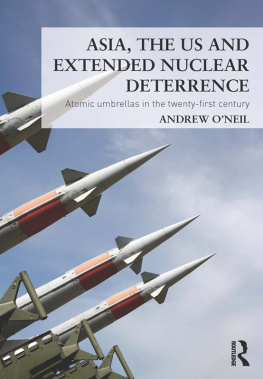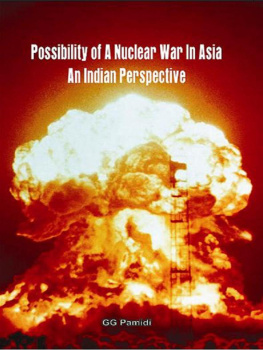Nuclear Asymmetry and Deterrence
This book offers a broader theory of nuclear deterrence and examines the way nuclear and conventional deterrence interact with non-military factors in a series of historical case studies.
The existing body of literature largely leans toward the analytical primacy of nuclear deterrence and it is often implicitly assumed that nuclear weapons are so important that, when they are present, other factors need not be studied. This book addresses this omission. It develops a research framework that incorporates the military aspects of deterrence, both nuclear and conventional, together with various perceptual factors, international circumstances, domestic politics, and norms. This framework is then used to re- examine five historical crises that brought two nuclear countries to the brink of war: the hostile asymmetric nuclear relations between the United States and China in the early 1960s; between the Soviet Union and China in the late 1960s; between Israel and Iraq in 19771981; between the United States and North Korea in 19921994; and, finally, between the United States and the Soviet Union during the 1962 Cuban Missile Crisis. The main empirical findings challenge the common expectation that the threat of nuclear retaliation represents the ultimate deterrent. In fact, it can be said, with a high degree of confidence, that it was rather the threat of conventional retaliation that acted as a major stabilizer.
This book will be of much interest to students of nuclear proliferation, Cold War studies, deterrence theory, security studies and IR in general.
Jan Ludvik is Assistant Professor at the Department of Security Studies and Research Fellow at the Center for Security Policy, Charles University, Czech Republic. He has a PhD in International Relations.
Routledge Global Security Studies
Series editors: Aaron Karp and Regina Karp
Global Security Studies emphasizes broad forces reshaping global security and the dilemmas facing decision-makers the world over. The series stresses issues relevant in many countries and regions, accessible to broad professional and academic audiences as well as to students, and enduring through explicit theoretical foundations.
Nuclear Weapons and International Security
Collected essays
Ramesh Thakur
International Relations Theory and European Security
We thought we knew
Edited by Lorenzo Cladi and Andrea Locatelli
The Evolution of Military Power in the West and Asia
Security policy in the post-Cold War era
Edited by Pauline Eadie and Wyn Rees
Regional Peacemaking and Conflict Management
A comparative approach
Edited by Carmela Lutmar and Benjamin Miller
Nonproliferation Policy and Nuclear Posture
Causes and consequences for the spread of nuclear weapons
Edited by Neil Narang, Erik Gartzke and Matthew Kroenig
Global Nuclear Disarmament
Strategic, political, and regional perspectives
Edited by Nik Hynek and Michal Smetana
Nuclear Terrorism
Countering the threat
Edited by Brecht Volders and Tom Sauer
Stable Nuclear Zero
The vision and its implications for disarmament policy
Edited by Sverre Lodgaard
Nuclear Asymmetry and Deterrence
Theory, policy and history
Jan Ludvik
First published 2017
by Routledge
2 Park Square, Milton Park, Abingdon, Oxon OX14 4RN
and by Routledge
711 Third Avenue, New York, NY 10017
Routledge is an imprint of the Taylor & Francis Group, an informa business
2017 Jan Ludvik
The right of Jan Ludvik to be identified as author of this work has been asserted by him in accordance with sections 77 and 78 of the Copyright, Designs and Patents Act 1988.
All rights reserved. No part of this book may be reprinted or reproduced or utilized in any form or by any electronic, mechanical, or other means, now known or hereafter invented, including photocopying and recording, or in any information storage or retrieval system, without permission in writing from the publishers.
Trademark notice: Product or corporate names may be trademarks or registered trademarks, and are used only for identification and explanation without intent to infringe.
British Library Cataloguing-in-Publication Data
A catalogue record for this book is available from the British Library
Library of Congress Cataloging- in-Publication Data
Names: Ludvik, Jan.
Title: Nuclear asymmetry and deterrence : theory, policy and history /
Jan Ludvik.
Description: Abingdon, Oxon ; New York, NY : Routledge is an
imprint of the Taylor & Francis Group, an Informa Business, [2017] |
Series: Routledge global security studies | Includes bibliographical
references and index.
Identifiers: LCCN 2016021372| ISBN 9781138696198 (hardback) |
ISBN 9781315525174 (ebook)
Subjects: LCSH: Deterrence (Strategy) | Nuclear weapons. | World
politics20th century. | Deterrence (Strategy)Case studies. | Nuclear
weaponsCase studies. | World politics20th centuryCase studies.
Classification: LCC U162.6 .L83 2017 | DDC 355.02/17dc23
LC record available at https://lccn.loc.gov/2016021372
ISBN: 978-1-138-69619-8 (hbk)
ISBN: 978-1-315-52517-4 (ebk)
Typeset in Times New Roman
by Wearset Ltd, Boldon, Tyne and Wear
Years ago, as a fresh and enthusiastic doctoral student, I started the research that culminated in this book with the simple goal to understand how nuclear deterrence works between a state with a small nuclear arsenal and its more powerful enemy. I was convinced that nuclear deterrence cannot be as easy as most people think. Well acquainted with the work of Cold War deterrence theorists and strategists, I was struggling with the puzzle. Was this considerable group of people completely wrong? Excellent human minds had tried hard to figure out how much is enough to deter. Consequently they designed large nuclear postures because they did not believe that small numbers could suffice. Of course, they could have been completely wrong. Already during the Cold War, some dissenting opinions suggested that very little is enough. And most importantly, the cases of clear deterrence failures between two nuclear states, even with small arsenals, are missing. Something must have helped stability to prevail. Going through the empirical evidence, I started to sense that, in fact, there really is a critical omission. Nuclear deterrence was given analytical primacy to the extent that few scholars seriously considered that conventional deterrence works in nuclear dyads as well. Yet, it seems that conventional deterrence worked better in a number of cases. Limiting research to studying how nuclear deterrence works between big and small cannot be enough.
For a good student of deterrence, a mere stable coexistence of nuclear weapons and stability in a hostile dyad should not imply nuclear deterrence success. Of course, nuclear deterrence is a plausible explanation, but not the only one. Deterrence is a complex phenomenon which is remarkably difficult to study empirically. Its failures, at least, are observable, easy-to-recognize events. Yet clear-cut deterrence failures are scarce in nuclear dyads. Deterrence successes, on the other hand, are essentially non-events. When deterrence holds, the war is avoided. But often it is hard to say that it was avoided and even more difficult to say why. It is well recognized that equifinality is a critical problem in the social sciences in general, and it is an even more challenging problem in the study of deterrence successes. It is widely recognized that it should not be underestimated in deterrence scholarship. But more often than not, this advice is ignored or only paid lip service in appropriate methodological sections.

